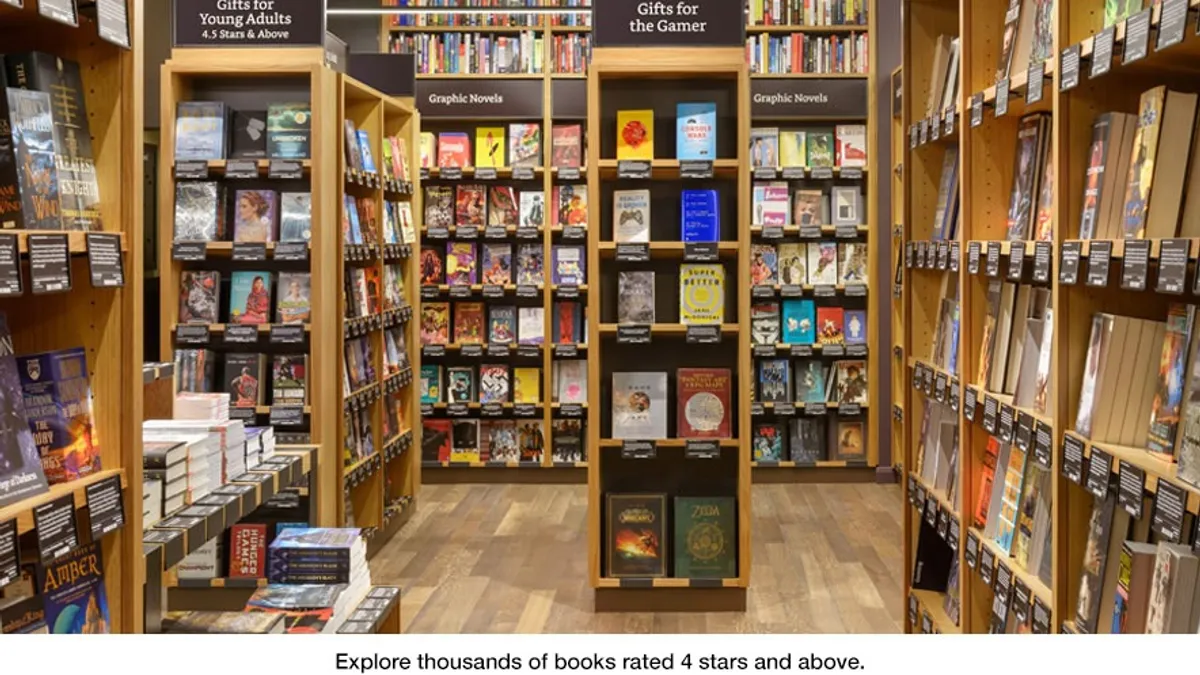Dive Brief:
-
As of August, Amazon has a new pricing scheme at its physical bookstores where Prime members enjoy lower prices, indicating a possible new strategy for its brick-and-mortar stores, Geekwire reports.
-
At the checkout at the Seattle University Village Amazon store, Geekwire found that Prime members can buy books and other items at the prices found on Amazon’s website, while non-Prime members pay list price. Previously, all shoppers paid the web price, according to the report.
-
While items don’t carry prices, price checks are available at kiosks that list discounts ranging from 6% to 40%, Geekwire found. The discounts do not apply to devices such as Amazon’s Echo and Fire tablet.
Dive Insight:
Amazon has kept quiet about just how many Prime members it has, only vaguely stating that its in the "tens of millions," so it’s up to other entities to crunch the numbers. This spring, investment firm Piper Jaffray estimated half of all households in the United States are Prime members, up from about 35% two years ago. Prime membership is concentrated (and growing fastest) among wealthier households — more than 70% of households with annual incomes topping $112,000 have a Prime membership, according to that research.
Cowen and Co. last year also found Prime members have an average household income of $69,300, well above that of non-Prime Amazon shoppers, 24.8% higher than that of Wal-Mart shoppers and 4% above that of Target shoppers. Prime members are, on average, 36.5 years-old, about the same as Target shoppers, and younger than Wal-Mart’s on-average 42 years.
Amazon’s Prime membership is a retailer’s dream: Research shows that Amazon’s Prime members are extremely sticky. Nearly three quarters (74%) convert compared to 13% of non-Prime members, according to a study last summer from Millward Brown Digital. The Prime-friendly prices at physical stores, which could extend to Amazon’s expansion plans for physical grocery stores and drive-up operations, are likely part of founder and CEO Jeff Bezos’s aim to expand membership. “We want Prime to be such a good value, you’d be irresponsible not to be a member,” Amazon founder and CEO Jeff Bezos wrote this spring in his annual letter to shareholders.
That explains much of Amazon’s behavior, too. While many view Amazon's speedy same-day Prime Now delivery, free two-day shipping, and summertime “Prime Day” sale as tools to beat its competition, they exist primarily to build its Prime membership program, experts have told Retail Dive.
Amazon Prime Day 2016 was the single biggest day in company history, with global merchandise sales eclipsing the first Prime Day event by more than 60% worldwide and more than 50% in the U.S. It was also the biggest day ever for Amazon devices globally. In all, Prime members across the globe saved more than double on deals over last year, Amazon said.













